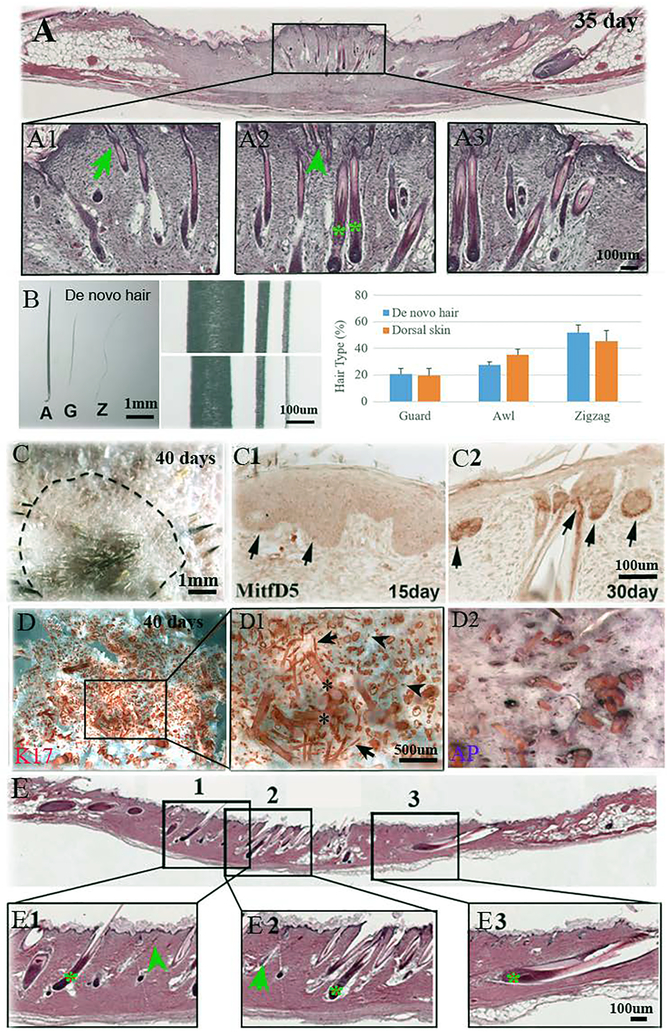Fig. 4.
Regeneration of hair type, pigmentation and recycle. A. All three hair types, zigzag (A1, arrowhead), guard (A2, arrow), and awl (A3, asterisk) are regenerated 35 days after large 1.5×1.5 cm2 wounding. B. The morphology of regenerated hairs. (A, awl; G, guard; Z, zigzag). The normal hairs (mid-upper panel) are thicker than regenerated hairs (mid-lower panel). The percentage of the de novo hair types is similar to the normal skin hair (B, graph). SD is calculated from 3 independent wounds and normal mouse dorsal skin samples (N=3). C. The pigmented hair shaft can be observed 40 days after wounding. Dotted line: original wound margin. C1. MitfD5 immuno-reactivity was expressed 15 days after wounding in hair placodes (arrows). C2. MitfD5 immuno-reactivity was expressed in new hair follicles after 30 days (arrows). D. Wholemount staining of the wound epidermis and dermis (D, D1, D2) show regeneration of all hair types across the wound bed. Arrowhead: zigzag; arrow: guard; asterisk: awl. E. Six months after wounding, the regenerated hairs are plucked. All three hair types, zigzag (arrowhead), guard (arrow), and awl (asterisk) grow back.

